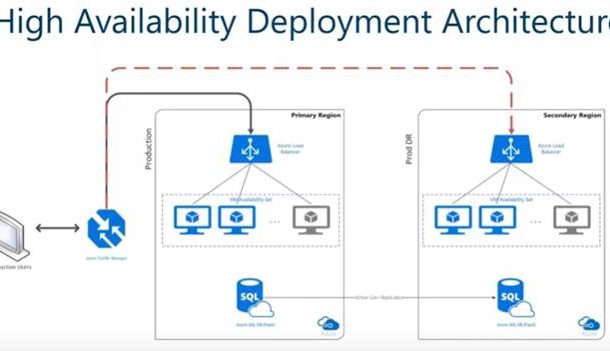
- +41 41 201 88 44
- [email protected]
- Mon-Fri 8am - 6pm
Azure DevOps provides support in –
Collaborating Code Development.
Building Application.
Deploy Applications.
Offerings of Azure DevOps include –
Azure DevOps Services.
Azure DevOps Server.
Azure DevOps Services –
Based on Cloud.
Do not need to install anything on Cloud.
Do not need to install anything in the On-Premise Data Center.
It can be used straightaway.
Azure DevOps Server –
All Code Deployment will reside in the On-Premise Data Center.
Everything to be managed On-Premise.
Previously known as Visual Studio Team Foundation Server.
Azure DevOps is typically used for –
Application Development.
Code Management.
Deploying Application.
Azure DevOps can also be used to deploy –
Infrastructure; and
Code.
In simpler terms, it means –
Manage ARM Templates in Azure DevOps.
Build and Release Pipelines for deploying Infrastructure and then deploy code on top of the Infrastructure.

Below follows the Azure DevOps Services –
Azure Repos.
Azure Pipelines.
Azure Boards.
Azure Test Plans.
Azure Artifacts.
Azure Collaboration Tools.
Azure Repos –
Source Code Version Control.
Supports – GIT and TFVC (Team Foundation Version Control)
Ability to create multiple branches.
Each branch represents a version of code.
Single developer or a team of developer will have access to the branch.
Code can be pulled from a particular branch to local GIT repository, required changes can be done, and finally the new code version will be published/Committed into the same branch.
Once all changes are committed to all branches, we will then be able to Merge all the changes to the Higher Branch.
Example:–
Test branch > Once the application code is tested on the Test branch > Will be moved to Master branch (Production)
Azure Pipelines –
Fully Featured CI/CD (Continuous Integration and Continuous Deployment).
Works with preferred GIT providers.
Can be deployed to Major Cloud Services.
Below can be created –
Build Pipelines – Will build code.
Release Pipelines – Carry out release to a specific destination.
Example:–
Code Enhancement in Dev branch > Code will then be merged to Test branch > Testing will performed > Code will then be merged into Master branch (Production) > Build will be triggered automatically when code changes is merged from Test branch to Master branch > Post build, it will be released in Production.
Azure Boards –
Supports SCRUM and KANBAN.
Customizable Dashboards.
Integrated Reporting.
Similar to Microsoft Planner.
Manage and Track Activities.
Move the Activities between various Buckets (Not Started, Started, In-Progress, Completed).
Azure Test Plans –
Browser based Test Management Solution.
Manual testing capabilities provided.
Exploratory testing capabilities provided.
Azure Artifacts –
Universal Store for Development and Deployment.
Applications have dependencies on various Packages. NuGet, Npm and Maven are most commonly used packages.
While building and releasing code, either packages will be consumed or published in the Artifacts.
These Packages in the Artifacts will be referred by Azure Pipelines.
Azure Collaboration Tools –
Customizable team dashboards with Customizable Widgets to share information, progress and trends.
Built-in wikis.
Setup Notification.
Commonly used widgets are mentioned below –
Widget focusing on Azure Repository > Changes in a particular repository can be tracked.
Widget focusing on Azure Pipelines build progress > How many builds completed successfully; How many builds failed.
Example:–
Build process fails > We need to get Notified > Can be configured within Azure DevOps Collaboration Tools.
Note:-
When we are trying to use Azure DevOps for the first time in our organization, we have to correlate our organization structure into DevOps.
The Primary steps include –
Create Organization in Devops.
Organize Projects within the Organization in DevOps.
Organization –
An Organization in Azure DevOps is a mechanism for organizing and connecting groups of related projects.
Example:–
Organization = Insurance Company
Business units = Vehicle Insurance, Home Insurance, Medical Insurance and so on…
Projects = CRM, Engineering and so on…
Projects –
A Project in Azure DevOps contains the following set of features:
Boards and backlogs > For Agile Planning.
Pipelines > For Continuous Integration and deployment.
Repos > Version Control and management of source code and artifacts.
Continuous Test Integration > Achieved through project life cycle. Each Organization contains one or more projects.
This marks the end of the article. I hope this write up helps you understand the terminologies and concept on Azure DevOps.
Steinentorstrasse 35 , 4051 Basel, Switzerland